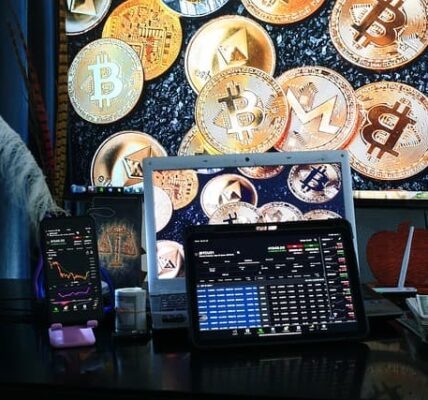Cryptocurrency is now seen as an investment, a possible security asset, and even a paycheck in meta universes – digital worlds in which you can create avatars, play, store, and socialize. All of these systems are supported by blockchain technology.
Blockchain is a database with transactions consisting of a sequentially built chain of digital blocks, each of which stores information about the previous and next blocks. It is a kind of digital notebook in which records are unchanged thanks to the hashing mechanism – a unique set of alphabetic and numeric symbols, where a change in one symbol leads to a change in other blocks. The main advantage of blockchain is its transparency, because everyone can read the information inside the blocks, but no one can change or destroy it.
How blockchain works
A blockchain is a distributed ledger system that is accessible to everyone on the network. For example, a blockchain-based digital currency can be created, moved and stored outside the purview of any government, financial institution or personal lawyer, but nevertheless every transaction is recorded on the blockchain and is public. It is a kind of Ariadne’s thread, breadcrumbs and navigator that leads anyone wishing to verify transaction information.
Blocks are added to the network through a mining procedure. For each new block, the miner receives a reward, which forms the financial basis of his activity. Once the first transaction is made, it must be verified by multiple participants in the network – this is the essence of decentralization of the blockchain without specific intermediaries. This means another advantage of blockchain over the classical financial system – unlike banks, blockchain operates around the clock and does not depend on the central bank of a particular country.
In 2014, it was reportedly possible to mine up to 1-2 bitcoins just on a regular computer at home, but to mine the same amount of bitcoins now, you have to tame complex math and find hundreds of video cards located in a single data center, also called mining farms. As miners want to earn more, they tend to buy as many specialized graphics cards as possible, which can be mined more efficiently than a conventional home, albeit powerful, computer. The shortage of chips used in graphics cards has influenced miners to buy up gaming graphics cards in 2021, which has raised the prices of Nvidia and AMD GPUs on the secondary market by two to three times.
The first algorithm for miners, including bitcoin, was called Proof-of-Work. It required a lot of computing power, which was provided by computers. That’s why now blockchains with Proof-of-Stake algorithm are appearing, where not machines, but validators – participants of the network responsible for its integrity and confirmation of all transactions taking place in the blockchain – rule the ball.
P-o-W requires a lot of electricity and expensive and rare specialized equipment. To become a P-o-S validator, one must have a certain number of coins of this network, pledge them, i.e. “create a stake” and put special software. By confirming transactions, validators are rewarded. The most prominent example of the P-o-W algorithm is the bitcoin network, and the alternative is the Ethereum network, which, although it started with the P-o-W algorithm, is in the process of transitioning to the P-o-S algorithm.
Types of blockchain
A blockchain can be a public network that anyone can connect to, or a private network that is typically used by organizations to avoid the loss of sensitive data.
After a while, the corporate sector has also taken notice of blockchain. The R3 consortium, which includes, for example, the American exchange Nasdaq and the Irish IT giant Accenture, created the Corda blockchain, which began to be used mainly in the financial sector. IBM’s Hyperledger blockchain has started to be used, for example, in the entertainment sector, reducing the counterfeiting and resale of event tickets, or in healthcare, to give access to patient data on the one hand and prevent its leakage on the other.
IBM clients find it much easier to work with a trusted vendor like IBM, which is why Hyperledger is quite popular with major corporations. Private blockchains are usually faster and cheaper, and all corporate data and transactions are held by a limited number of network participants. Admittedly, this leads to the fact that within a private network it is much easier to “collude and cheat” the system and much harder to communicate with another network. So when it comes to transparency and sustainability, everyone chooses the blockchain that serves their purposes.








